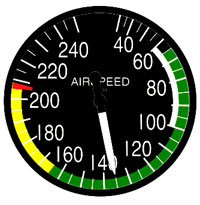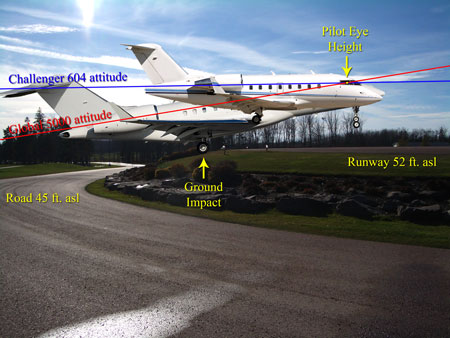There are three ways of calculating your airspeed. Each one needs to be used in certain situations. It’s important to know when to use which airspeed and how to calculate it.

True Airspeed: Airspeed that is corrected for air density error. This is the actual speed you are traveling through the air.
Calibrated Airspeed: Airspeed that is corrected for instrument error and position.
Indicated Airspeed: Airspeed as reported by the airspeed indicator.
To understand when and how to calculate TAS and CAS, one must understand how the airspeed indicator works.
Airspeed is the speed at which the aircraft is traveling through the air not the speed at which it is traveling over the ground (thats known as ground speed). So how does this instrument work? It measures the difference between the static pressure and the pitot pressure.
Static pressure is just pressure exerted on the instrument from the atmosphere.
Pitot pressure is the dynamic pressure created by the aircraft flying through the air plus the static or atmospheric pressure. A pitot is a little tube that allows air to enter.
Hold your hand out, palm facing your face. Static pressure is currently being exerted on your palm (the weight of the air in the room you’re sitting in). Now blow on the palm of your hand – That’s dynamic pressure.
Because the instrument depends on pressure to determine the airspeed, certain scenarios can cause errors in the IAS:
Density Error: As your altitude climbs, the air gets thinner and thinner. Although you are traveling at the same speed, less air molecules are entering the pitot pressure system. Therefore the pressure entering the instrument is less and therefore reports a slower speed. In order to correct for this density error you can add 2% (approx) to the IAS for every 1,000 feet of pressure altitude (I will be explaining the different kinds of altitudes later).
Position Error: This is error caused by the position of the pitot intake “hole”. Eddies that are formed as the aircraft passes through the air can cause more or less air to pass over the pitot intake. Also high angles of attack (such as at take off) place the pitot intake at an unusual angle to the dynamic pressure. Take your hand again, and blow against it, however this time start changing the angle so that the bottom part of your hand is farther away from your face.. see how you “feel” less air?
So with all that out of the way.. when do you use which airspeed? In most cases you will always use TAS. To calculate TAS you need to know the altitude and outside air temp. The calculation is quite complex as it involves calculating the speed of sound (for the altitude and temperature you know). The equations can be found here. In all cases you will be calculating your TAS using your E6B.
There is one other airspeed that I neglected to mention. This is the Equivalent Airspeed. This only applys to speeds greater than 250 knots at altitudes below 10,000 feet. This airspeed takes into account the compressibility of the air. The faster you move through the air, the more compressed the air becomes just in front of the aircraft.


